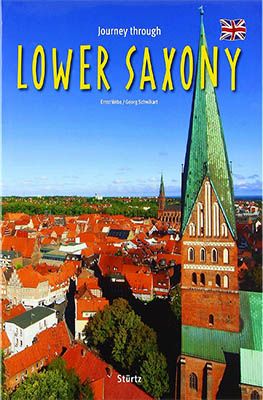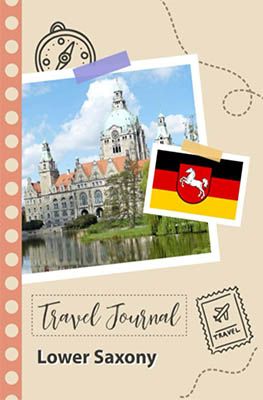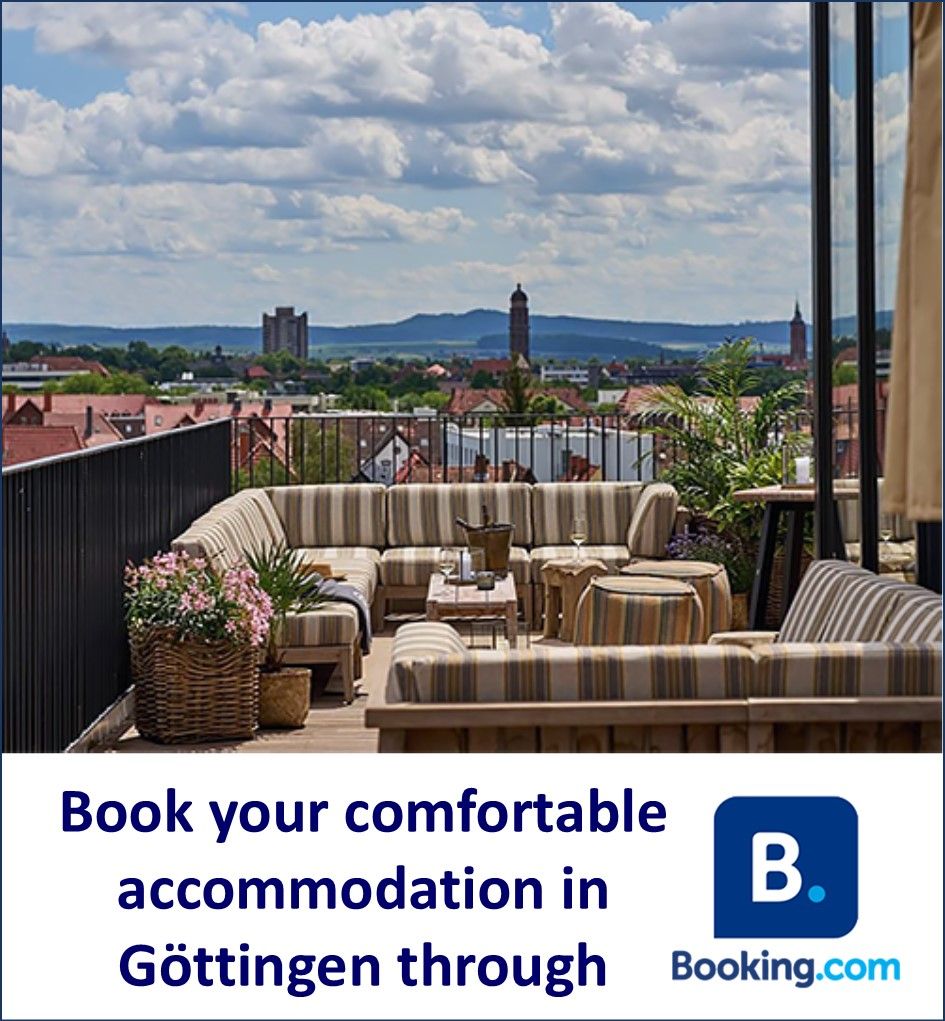Nestled in the heart of Lower Saxony in Germany lies Göttingen, a city where history and innovation go hand in hand. Once the intellectual centre of the Age of Enlightenment, Göttingen remains a beacon of knowledge and culture to this day. We recently visited this charming university town and were utterly amazed. We explored the picturesque old town, surrounded by medieval city walls, and visited many fascinating attractions just outside the city. In our opinion, a city break to Göttingen is an excellent idea for lovers of culture, history and science.
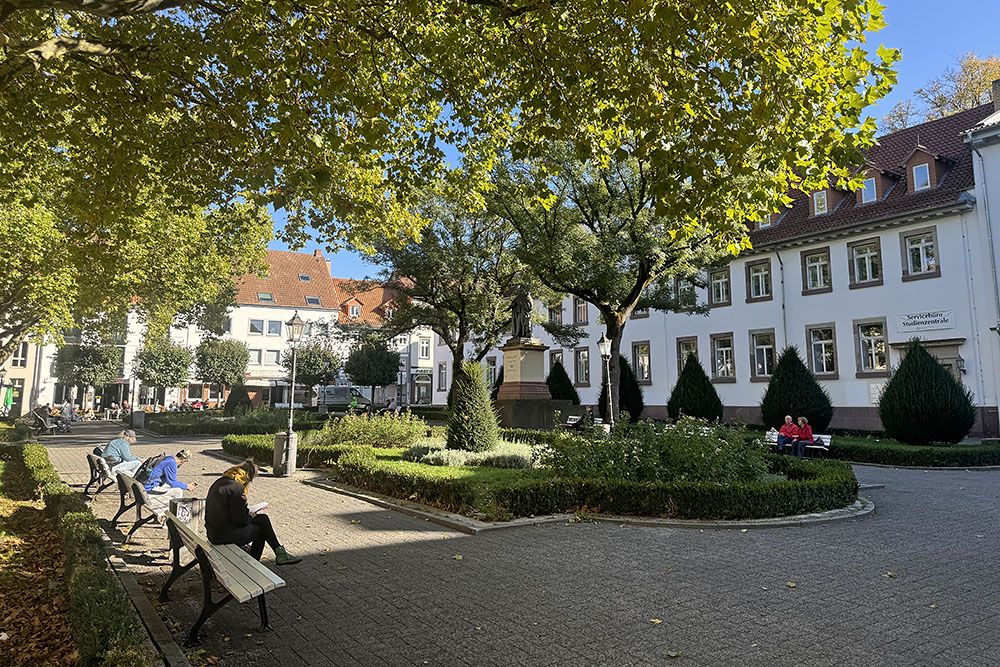
A brief history of Göttingen
The history of Göttingen dates back to the early Middle Ages. In the mid-10th century, Otto I first mentioned the city in a charter, putting Göttingen on the map. However, it wasn’t until around 1200 that the settlement truly came to life. Otto IV granted Göttingen city rights, a crucial step that paved the way for growth and prosperity.
The late Middle Ages offered Göttingen new opportunities. The city joined the powerful Hanseatic League, a confederation of merchant towns that dominated the economy of Northern Europe. Göttingen’s merchants travelled far and wide, bringing back wealth and new ideas. In 1387, the city established the famous Schützengesellschaft. This marksmen’s association still exists today and keeps the connection with the glorious past alive.
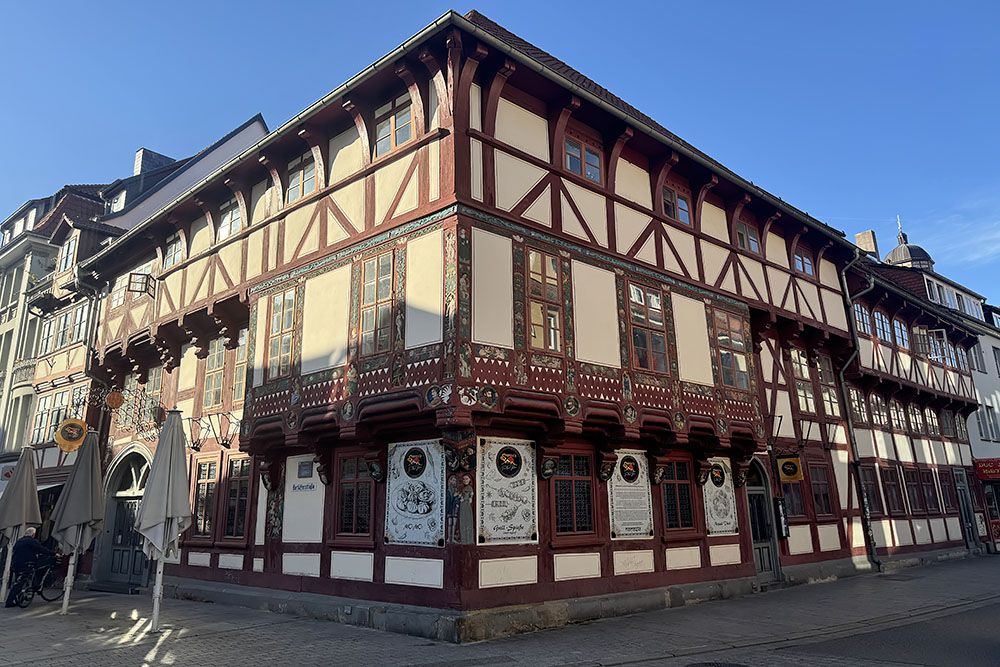
University town Göttingen
It wasn’t until the 18th century that Göttingen found its true calling. In 1734, George II, Elector of Hanover and King of Great Britain, founded the Georg-August-Universität. This institution grew into a beacon of knowledge and enlightenment, attracting scholars and students from far and wide. Great names such as Carl Friedrich Gauss and the Brothers Grimm walked the streets of Göttingen, shaping the intellectual landscape of Europe.
The 19th century brought both challenges and triumphs. In 1837, the “Göttinger Sieben”, seven courageous professors, took a stand against the abolition of the liberal constitution. Their protest echoed throughout Germany and cemented Göttingen’s reputation as a bastion of freedom and critical thinking.
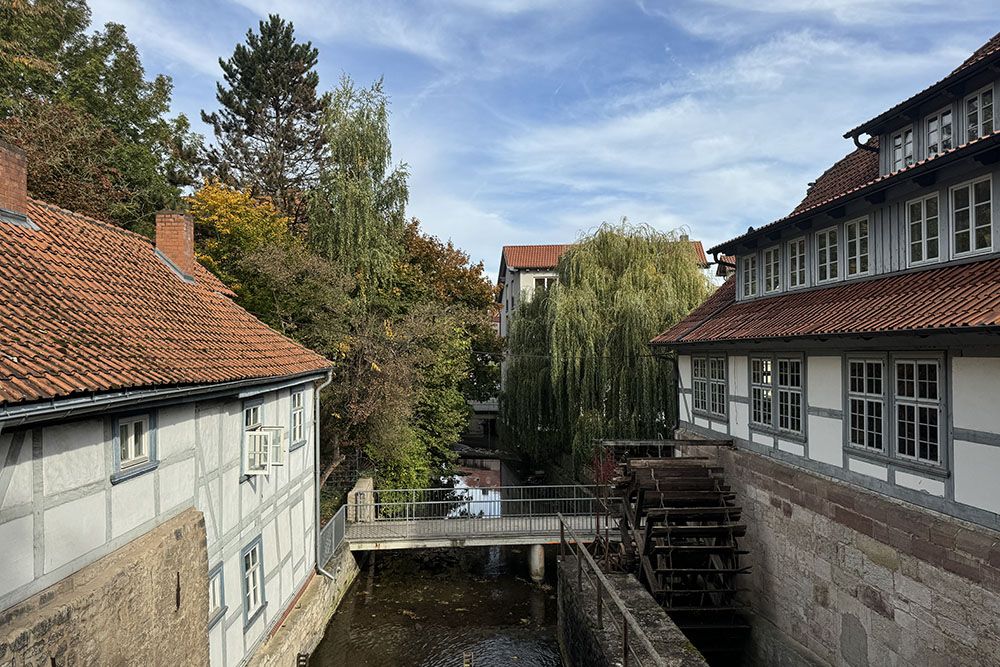
Even the dark days of the Second World War could not break the spirit of Göttingen. The city was largely spared from bombing and surrendered without a fight to American troops in 1945. This not only prevented destruction but also laid the foundation for rapid reconstruction and renewed prosperity in the post-war years.
The second half of the 20th century saw Göttingen grow and flourish. The university expanded, new research institutes established themselves in the city, and in 1993, the impressive new State Library opened its doors. Göttingen confirmed its position as one of the most important centres for science and research in Germany.
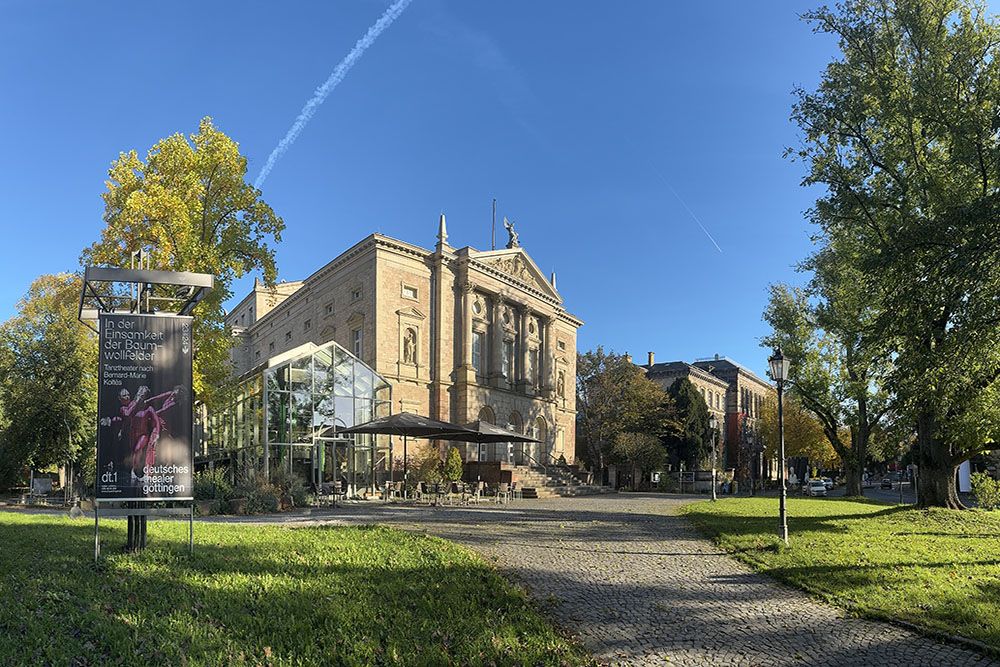
A walking tour through medieval Göttingen
On the day of our arrival in Göttingen, a guided city tour is scheduled for the afternoon. As we arrive a bit earlier, we decide to explore part of this beautiful city on our own.
On alltrails.com, we find a three-kilometre route that leads along the old city wall. As we walk along the well-preserved medieval fortifications, we can almost feel the history beneath our feet. The city wall, once built to protect the citizens, now offers a beautiful view over the red roofs of the old town. On the other side, we can see in the distance the wooded hills where autumn has clearly set in. Old linden trees flank the earthen path, now in their full glory with the most beautiful autumn hues. We are amazed by the tranquillity during our short walk. It feels as if we are among the first visitors to discover this magnificent part of the city. If this is a foretaste of what we are yet to see, then the city break is already more than successful!
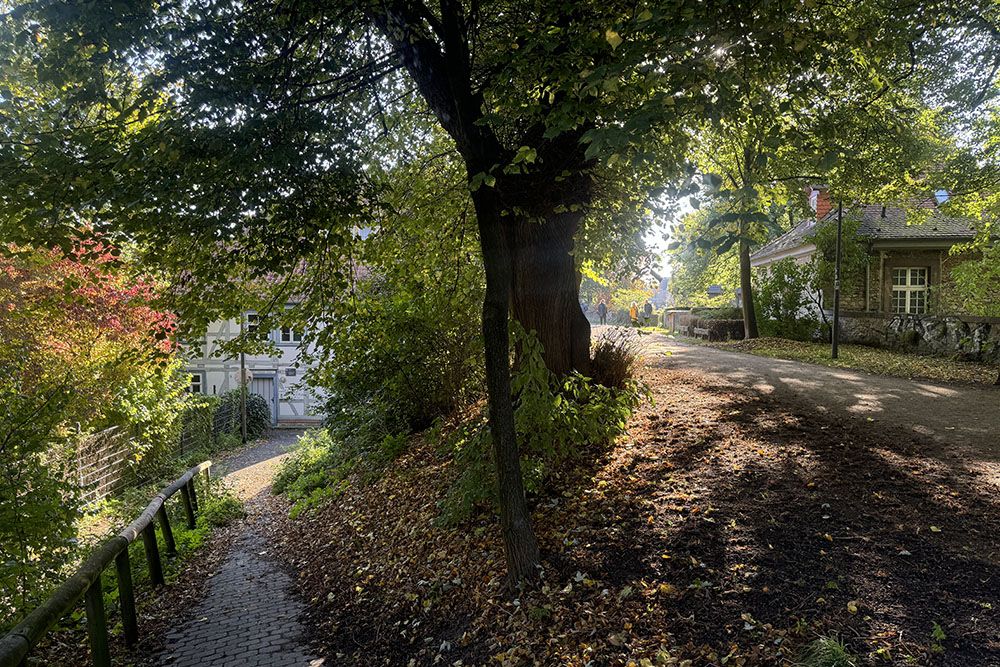
Later, we meet our guide Gudrun at our hotel, a rather eccentric professional storyteller. Gudrun studied cultural sciences, history and archaeology in Göttingen and obtained her doctorate there. She “stuck around” in this city and has since worked as a city guide. It quickly becomes clear to us that we are dealing with a true specialist in the regional history of Southern Lower Saxony. She takes us on an energetic and humorous journey of discovery through the Hanseatic city.
Over two days, she introduces us to the many highlights of Göttingen. In every street, she has an interesting story or anecdote to tell about scientific breakthroughs and cultural richness. Below are some of the attractions that impress us.
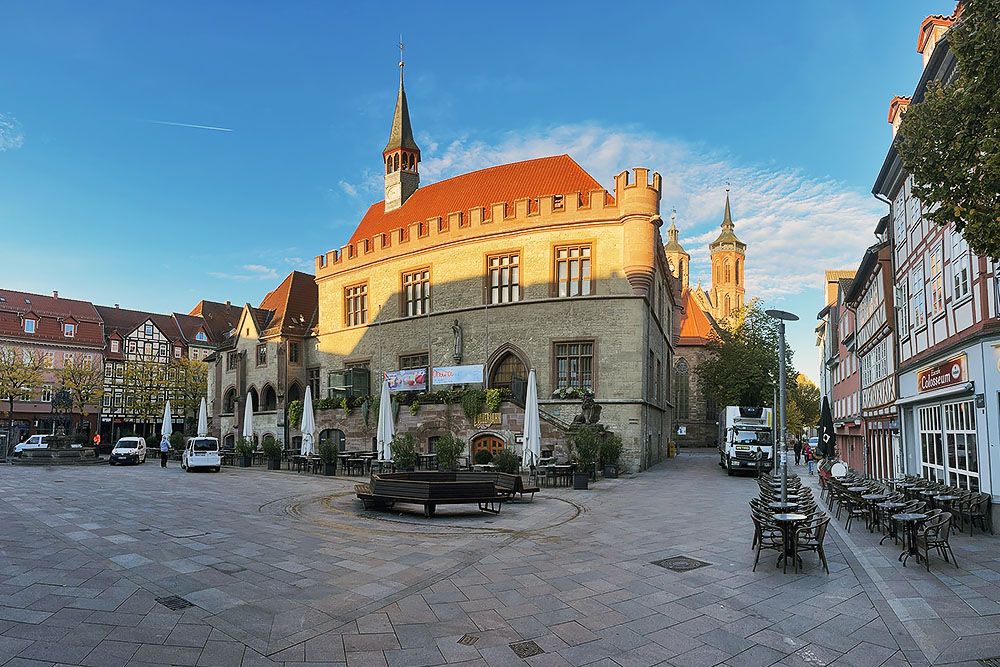
Georg-August-Universität Göttingen
In the university town of Göttingen, we of course visit the Georg-August-Universität. This university is one of the most renowned universities in Germany and is particularly known for its natural sciences. It has produced more than 40 Nobel Prize winners, including famous scientists such as Max Born and Otto Hahn.
On the square of the nearly 300-year-old main building, we encounter a group of students. Adorned with angel wings and halos, the new students have to complete various tasks. Given the large number of beer crates, half of which have already been consumed, the tasks might prove to be quite challenging. We consider the chance of a new Max Planck emerging from this group to be negligibly small. But they are having fun like no other, which makes us a bit nostalgic for our own student days.
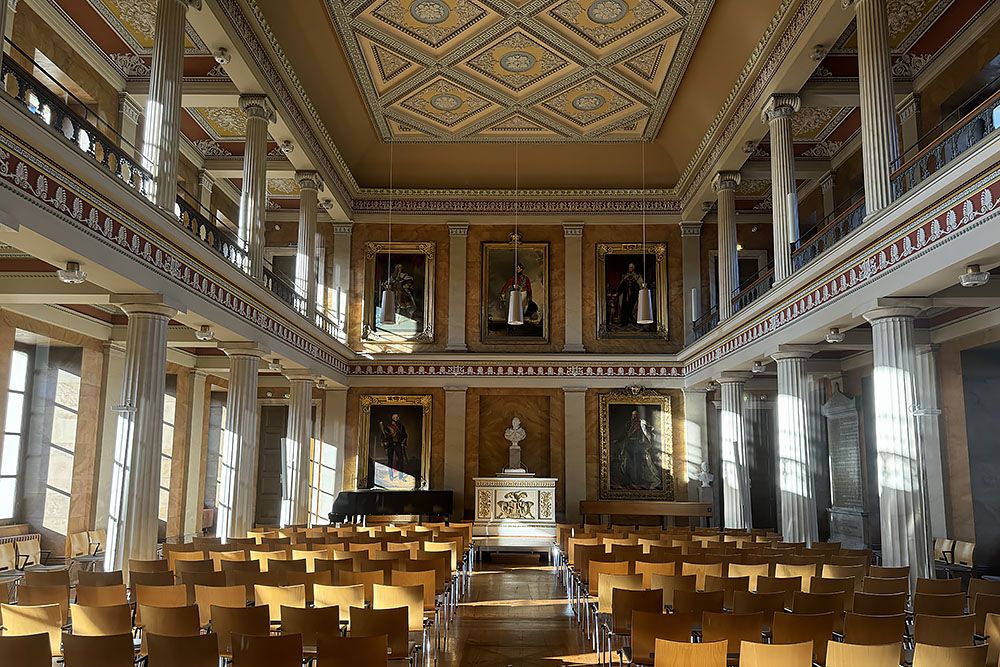
We also take a look at the impressively beautiful old auditorium of the university. Our guide serves up one anecdote after another. For instance, she tells us that the beautiful columns of Italian marble (see photo) are very artfully made of wood. This is because the contractor, due to time constraints, couldn’t travel to Italy and back in time to fetch the marble.
The series of anecdotes continues in the Karzer: the student prison for minor offences such as night-time noise or riding horses too fast. Initially feared, it later became a status symbol among students. In fact, you didn’t really count as a student if you had never spent a night in detention here. Even Otto von Bismarck was once imprisoned here. The end of the Weimar Republic also meant the end of the Karzer, which closed a unique chapter in Göttingen’s student life.
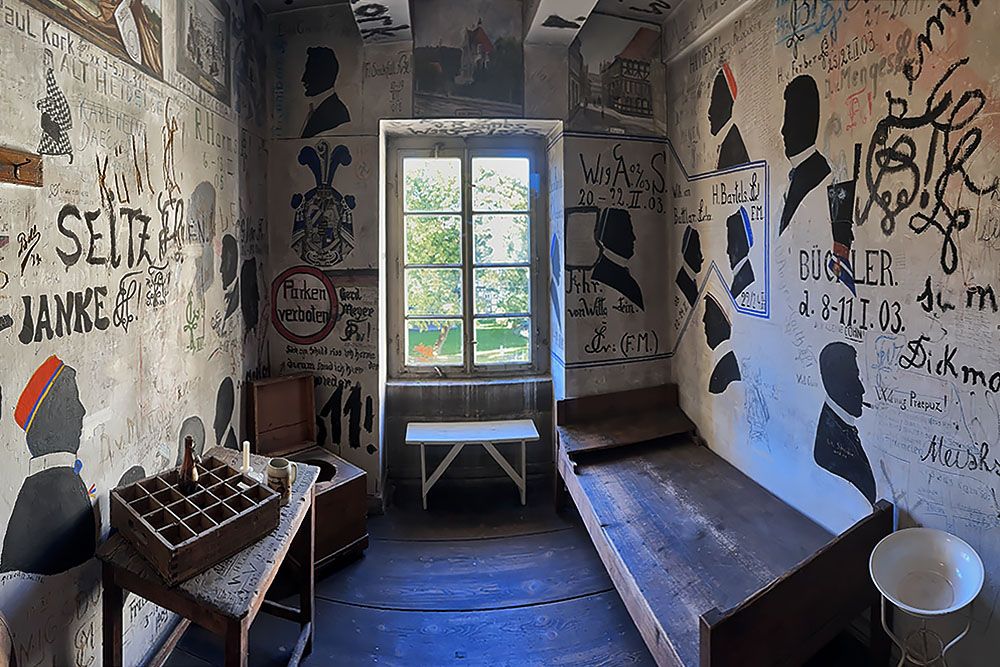
The kissing ritual around the Gänseliesel
Our guide leads us to the Gänseliesel: an iconic bronze fountain statue in the square in front of the old town hall. It depicts a young girl herding geese. The fountain is not only a popular meeting place but also the centre of a unique university tradition. Newly graduated doctors traditionally kiss the statue as part of their celebration. This ritual has earned the Gänseliesel the nickname “the most kissed girl in the world”.
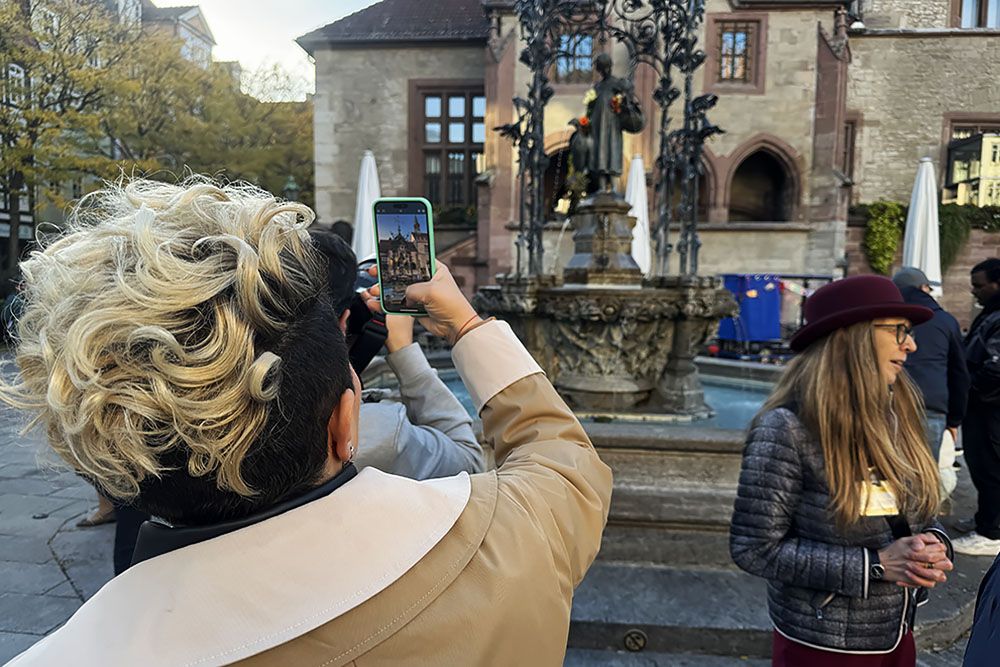
Göttingen Observatory
Just outside the city wall surrounding the old centre of Göttingen is the observatory. The observatory was built at the beginning of the 19th century with support from George III of the United Kingdom. For its time, it was an advanced building with innovative architecture and state-of-the-art instruments. Under the leadership of famous scientists such as Carl Friedrich Gauss, the observatory facilitated groundbreaking research and accurate astronomical observations.
Gudrun, our guide, has the key to the building, which was renovated in 2008. Thus, we receive a private tour of the unique building that now houses the Lichtenberg-Kolleg Institute for Advanced Study. We get a crash course in astronomy and listen in awe to the story of the observatory’s construction. Although the observatory is no longer in use as such, it remains an important monument to the history of science. But it is also a symbol of progress in astronomy and physics over the past two centuries.
On set days, there are guided tours through this not-to-be-missed highlight of Göttingen.
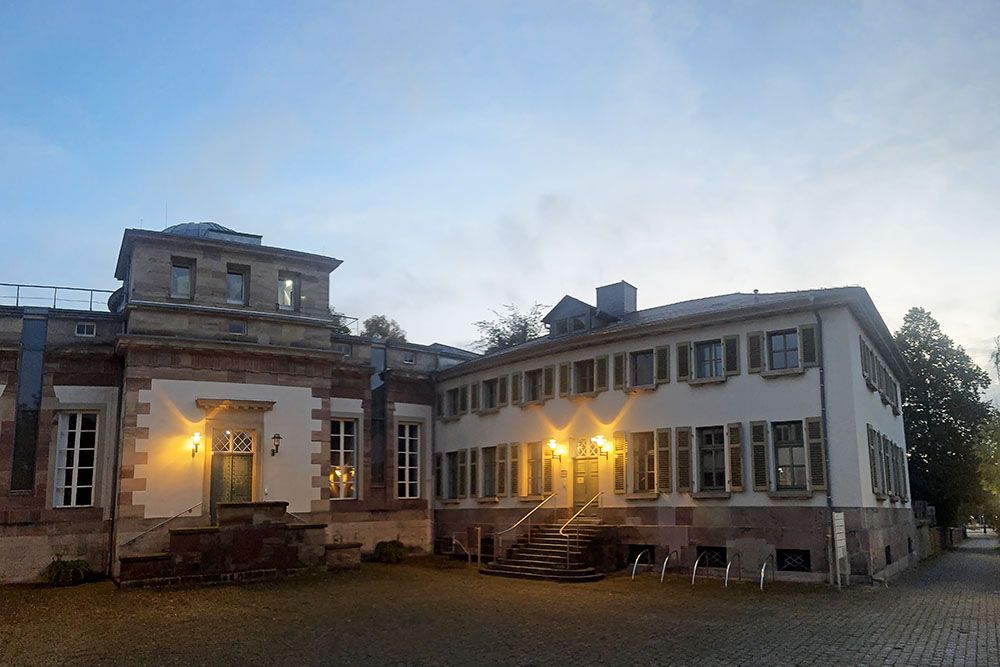
The old botanical garden
During our walk along the old city wall around the historic centre of Göttingen, we get to see it: the old botanical garden. Driven by curiosity, we want to take a look then, but we can’t find the entrance. However, Google Maps this time leads us to an inconspicuous door that gives access to the garden. We first pass a café with a terrace where students are enjoying the sunshine and a drink. Through a narrow tunnel, we reach the botanical garden, founded in 1736, making it one of the oldest botanical gardens in Germany.
The garden was originally created for the study of medicinal plants. Now you can find an impressive collection of more than 10,000 plant species from different climate zones. The garden still plays an important role in the education and research of the Georg-August-Universität Göttingen. For us today, it is mainly a green oasis where it’s pleasant to linger when your head is full of historical or scientific facts.
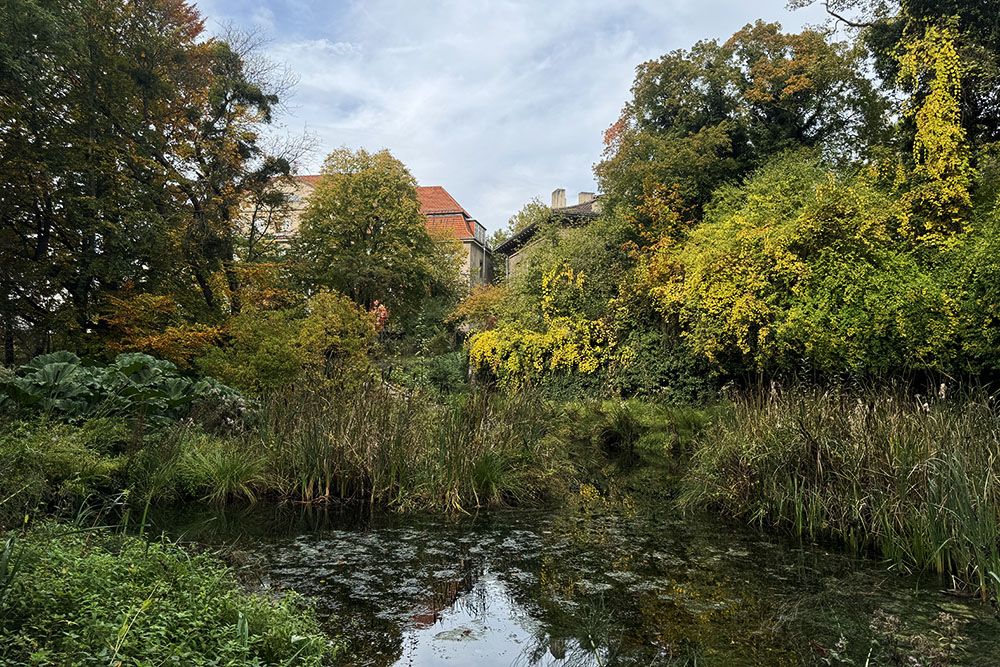
Forum Wissen
Forum Wissen is an innovative museum and knowledge centre housed in the former natural history museum of the Georg-August-Universität. Here we get a unique look at the history of science and knowledge. We marvel at the diverse collection of scientific instruments, specimens and artefacts from various disciplines. Furthermore, thanks to the interactive exhibitions, we learn more about how knowledge is created, shared and preserved. Absolutely worth a visit!
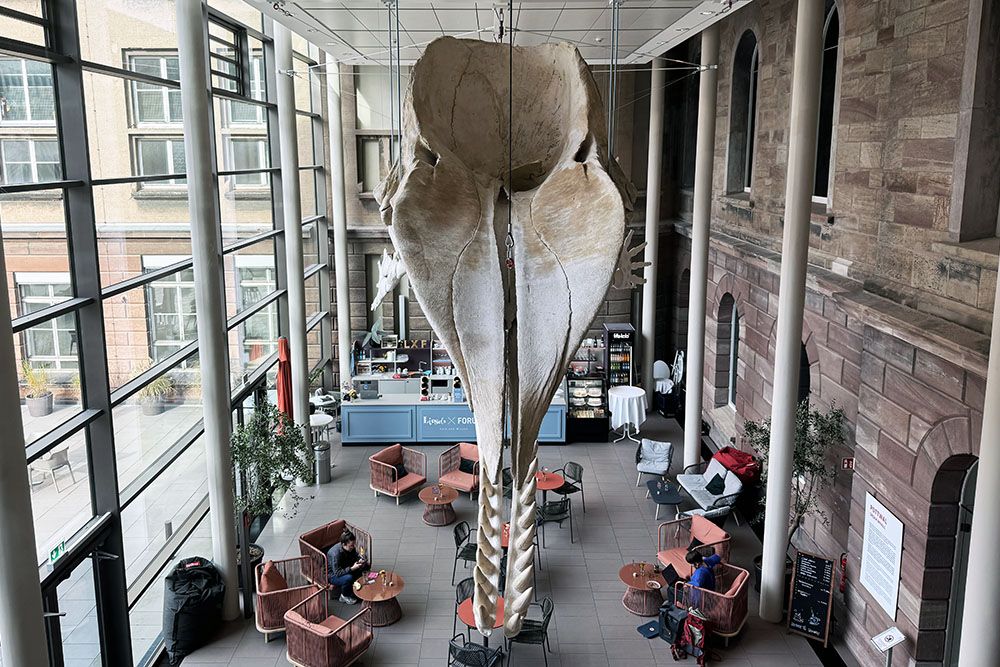
Wiechertsche Erdbebenwarte
The Wiechert earthquake station, or Wiechertsche Erdbebenwarte, in Göttingen is a unique seismological observatory established in 1902 by Emil Wiechert. He was the world’s first professor of geophysics. The station houses the world’s oldest still functioning seismograph and plays a crucial role in the history of seismology.
To visit this seismological centre, we take the bus. We walk the last bit from the bus stop through a beautiful, wooded area. At the door of the somewhat dated building, we are greeted by our guide, Dr Werner Curdt. Werner then introduces us to historical and modern seismographs, including the impressive 17-ton pendulum seismograph. The station is not only a very interesting museum, it is still in use for scientific research! We are shown the measurements of some earthquakes earlier this year in Taiwan and Italy. We are amazed that this centre even registers tremors on the other side of the world.
At the end of our tour, Werner has a special attraction in store for us. He leads us on a short walk through the forest to a large structure. At the top hangs the so-called Mintrop ball. It’s a four-tonne metal sphere that can generate artificial earthquakes for research purposes. Not a minute later, we witness this firsthand. He drops the ball with such force that our entire group feels the ground trembling. See also the video we made of this.
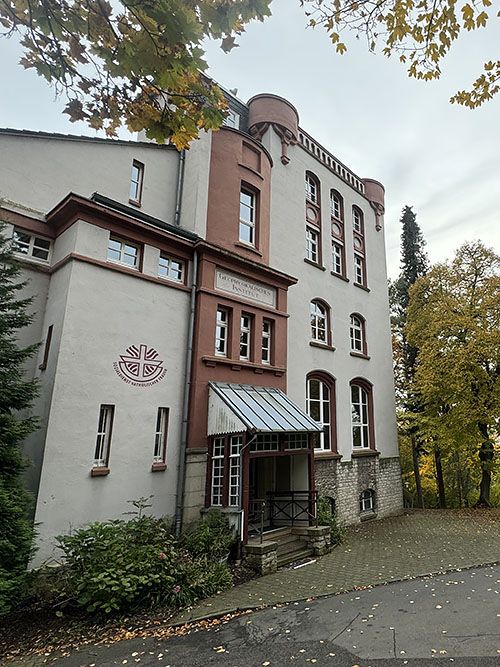
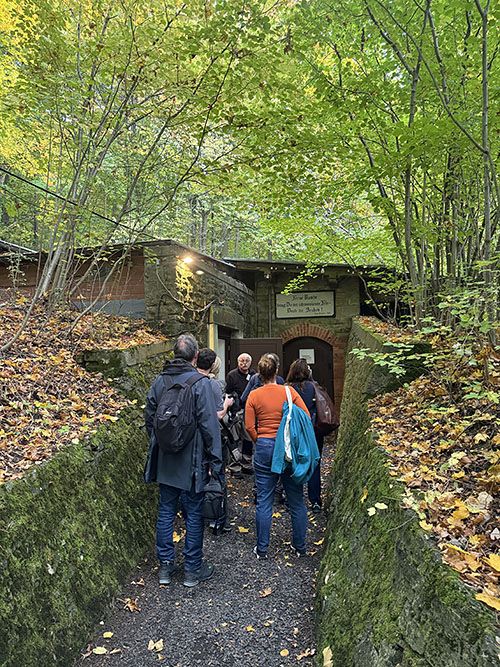
Attractions in the vicinity of Göttingen
We can easily enjoy ourselves for three to four days in Göttingen. But there’s also plenty to see and experience in the surrounding area. Outdoor enthusiasts will find ample opportunities in the surrounding nature reserves. In the Harz Mountains, for example, hikers can enjoy an abundance of beautiful walks. And for cyclists, there are various scenic bike routes. More interested in culture and history? We explore two small towns in the immediate vicinity that are definitely worth a visit:
Ebergötzen
One of the places we visit in the area is Ebergötzen, a small municipality about 15 kilometres east of Göttingen. The village is particularly known as the place where the famous children’s book author and illustrator Wilhelm Busch spent part of his youth. Here, he befriended Erich Bachmann, the son of the local miller. Their adventures later inspired his famous story “Max und Moritz“. We visit the Wilhelm-Busch-Mühle museum here to learn more about the life and work of the writer and local history.
We also visit the European Bread Museum in this small town. It’s a unique attraction dedicated to the history and culture of bread. The museum was founded in 1971 and houses an extensive collection that illustrates the development of bread and baking through the centuries. It’s worth a visit if you have a bit more time in Lower Saxony.
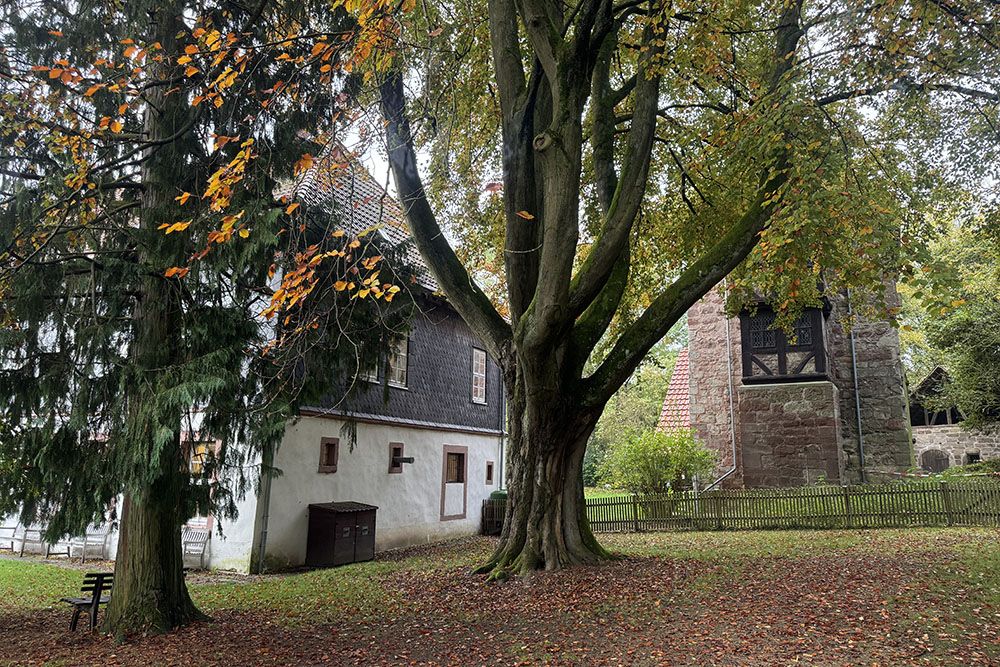
Duderstadt
Besides Ebergötzen, we explore the fairy-tale-like Duderstadt. Here we admire the extremely picturesque centre and find inspiration at the nature experience centre of the Heinz Sielmann Foundation. We also pay an impressive visit to the Grenzlandmuseum, where we go back in time to the Cold War era. We published a separate blog about our more than fascinating day trip to Duderstadt.
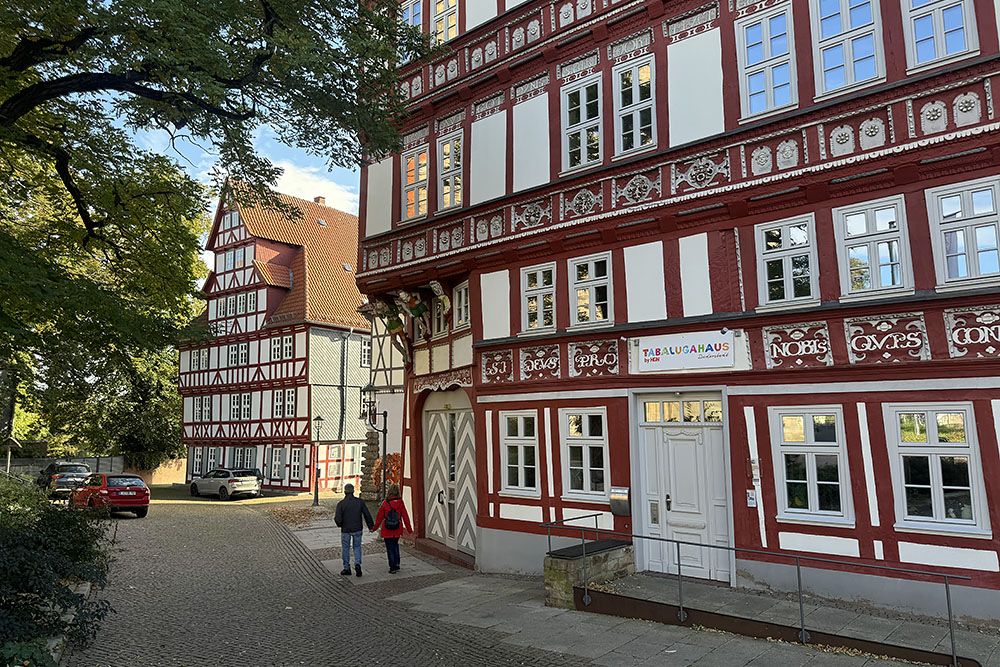
Answers to frequently asked questions about visiting Göttingen
The Hanseatic city of Göttingen is located in the German state of Lower Saxony. It's situated about 120 kilometres south of Hanover, the capital of Lower Saxony, and about 300 kilometres southwest of Berlin. The city lies on the River Leine, in a valley between the Harz Mountains to the east and the Weser Uplands to the west.
Göttingen is an important university city. The Hanseatic city is known for the Georg-August-Universität, one of the oldest and most prestigious universities in Germany. More than 40 Nobel Prize winners have studied or worked there. Göttingen is also known for the 'Göttingen Seven', seven professors who protested against the abolition of the liberal constitution in the 19th century.
The best time for a city trip to Göttingen is generally from May to October. During these months, the weather is usually pleasant. The long summer days offer extra time to admire the historical sights and enjoy the conviviality in the city centre. Moreover, many cultural events take place during this period, including the annual International Händel Festival in June.
During a city trip to Göttingen, there are several unmissable highlights. Start with a visit to the old town hall on the Marktplatz, a beautiful example of North German Gothic architecture. Then walk through the historic city centre and admire the many half-timbered houses. The Georg-August-Universität, one of the oldest universities in Germany, is a must-see with its impressive buildings and rich history. Don't miss the iconic Gänseliesel fountain, the symbol of the city where newly graduated students traditionally give a kiss. The St. Johannis Church, a Gothic church from the 14th century, offers a beautiful view of the city from its tower. For culture lovers, the Städtisches Museum is recommended, with collections that highlight the history of Göttingen. Conclude your visit with a walk in the Alter Botanischer Garten, one of the oldest botanical gardens in Germany.
Göttingen offers a variety of excellent restaurants. Some places where we ate deliciously include:
- Bullerjahn: a modern restaurant in a historic building, serving regional and seasonal specialities. They are also known for their creative beer cocktails.
- Kartoffelhaus: an internationally oriented restaurant that is well-reviewed by guests. It offers a varied menu and has a cosy atmosphere.
- Zum Szültenbürger: an authentic German restaurant in a half-timbered house, specialising in traditional dishes such as schnitzel. The portions are generous and the atmosphere is particularly cosy!
Other restaurants in Göttingen with good reviews:
- Gutenbergterrassen: an atmospheric restaurant with a beautiful terrace, specialising in seasonal dishes with local ingredients. The view over the city is breathtaking and the ambiance is relaxed and elegant.
- Le Feu Göttingen: a lively restaurant specialising in flammkuchen, a thin crispy pizza from Alsace. The variety of toppings is impressive and the atmosphere is cosy and informal.
- Vietal Village: a colourful Vietnamese restaurant serving fresh and authentic dishes. The flavours are intense, the portions are generous and the atmosphere is warm and inviting.
- Four Seasons: a versatile restaurant offering international dishes, with a menu that changes each season. The presentation is creative, the flavours are refined and the ambiance is stylish and comfortable.
For the best experience, it's advisable to book in advance, especially at weekends or during busy periods. Many of these restaurants also offer seasonal menus, so be sure to ask about the daily specials or chef's recommendations.
In the Hanseatic city of Göttingen, there are several excellent accommodation options. Here are some of the best options:
- Eden-Hotel: This modern hotel, located near the city centre, offers 64 stylishly furnished rooms. The accommodation combines comfort with contemporary design. The hotel has a trendy bar where guests can enjoy creative cocktails and light meals.
- Hotel FREIgeist Göttingen Innenstadt: This 4-star hotel has 118 rooms and offers a cool but cosy atmosphere. The interior combines modern elements with funky artwork. The hotel has a Peruvian-Japanese fusion restaurant and a bar serving herbal cocktails. There's also a fitness room and sauna.
- Hotel Gebhards: This classic hotel in the heart of the historic university town has 50 rooms. The rooms are simply but comfortably furnished. The hotel has a recommended restaurant that serves local specialities.
We ourselves stayed at Hotel Central, a charming family hotel in the heart of Göttingen. The rooms are spacious and fully equipped. When booking, ask for a room at the back as you may experience noise from students going out on the street side. The hotel offers an extensive breakfast buffet and has a cosy lounge where you can relax perfectly.
Other accommodation in Göttingen can be found here.
We visited Göttingen and the surrounding area at the invitation of the German Tourist Board. We have written the blog independently and objectively based on our own impressions.

